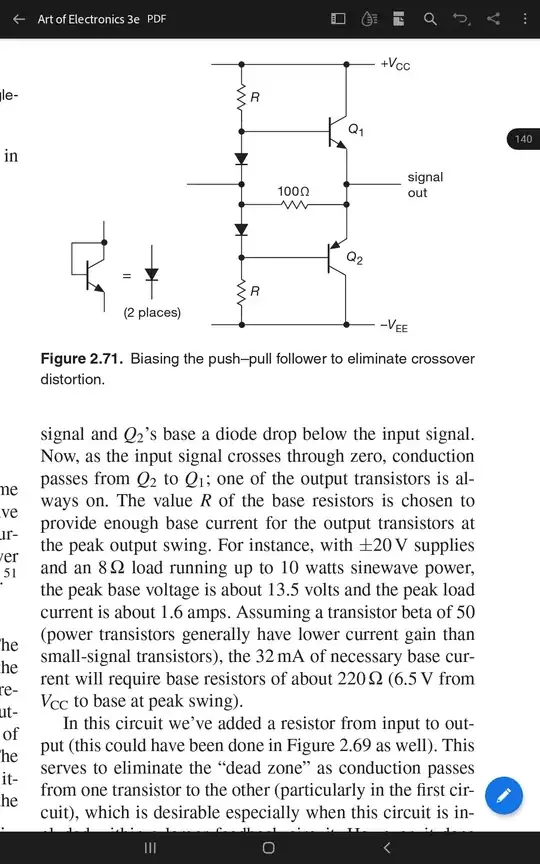I am studying the Art of Electronics and cannot follow the calculation steps regarding the resistors R in the attached image. Below the circuit, it is also described how the values for the resistors are determined. But what I don't understand is how R can be calculated by dividing the 6.5V by the base current. Isn't there also a certain amount of current flowing through the diode? I would say that the 6.5V should be divided by the sum of the diode current and the base current. What am I missing?
Asked
Active
Viewed 236 times
2
-
3Notice that the input voltage cannot provide a base current. Only resistors can provide the current needed by a transistor. https://electronics.stackexchange.com/questions/502552/class-ab-power-amplifier-output-signal/502583#502583 – G36 Sep 06 '22 at 21:35
-
Ah, I understand now. We have the max base current when the diode is off. Then it makes sense. The link was exactly what I was looking for. I should've also searched for Class AB amplifiers. – abg1984 Sep 06 '22 at 23:10
1 Answers
1
The entirety of the static base current is provided by the resistors R. Their value needs to be low enough that for the largest input voltage excursion, both diodes are still forward-biased.
Kuba hasn't forgotten Monica
- 40,960
- 1
- 39
- 120
